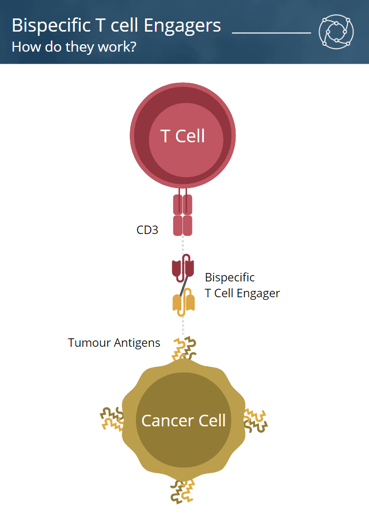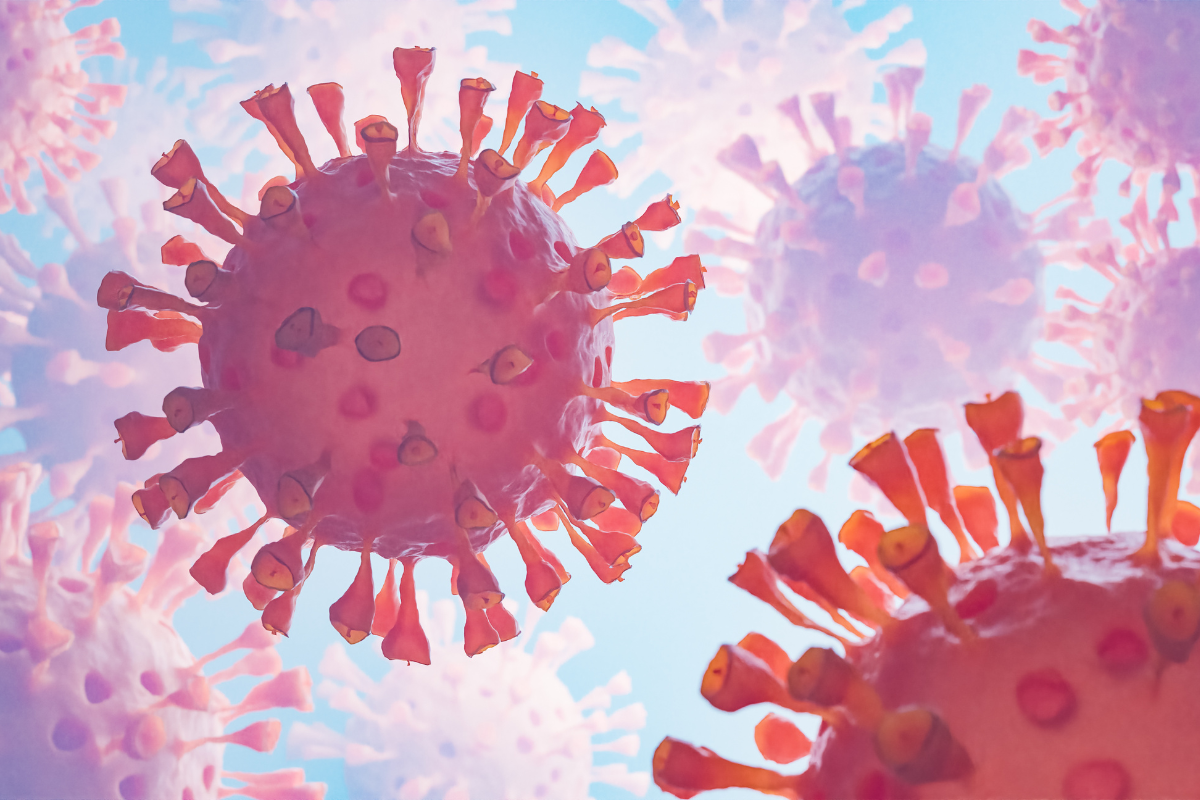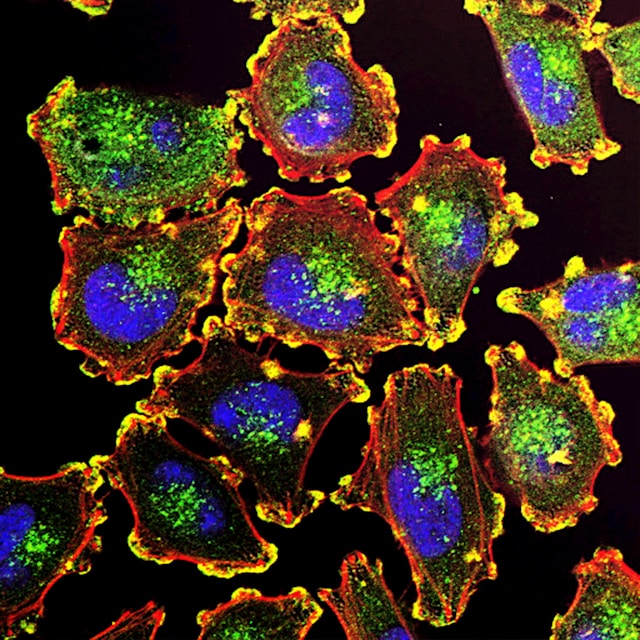What are the Key Challenges in Developing Bispecific Antibodies for Cancer Immunotherapy?

Our Immuno discussion group on bispecific antibodies for cancer immunotherapy took place in November and featured senior researchers in both industry and academia. Leading the discussion by introducing the topics and stirring the conversation between our attendees were Jonathan Davis and Christopher Fraser.
Davis is Vice President of Innovation and Strategy at Invenra, a company focussing on bispecifics and trispecifics. Invenra investigates the tumour microenvironment and immune system in order to push for innovative and creative antitumour solutions.
Fraser is Director of Antibody Discovery and Immunotherapy at QLSF Biotherapeutics, and also concentrates on bispecifics and trispecifics for immunotherapy. Rather than developing a specific platform, QLSF’s approach has been to increase the understanding of the tumour microenvironment’s interaction with the immune system. The hope is to modulate antibodies to target different immuno-oncological targets.
The Background of Bispecific Antibodies
Fraser commenced by introducing the topics of the discussion: “We have a plethora of opportunities and combinations to work with,” he said. “But are there too many? And how do we deal with that?” Fraser added that there are more than one hundred immunotherapies in clinical trials, among them are numerous antibody structures. Moreover, combination strategies with T and NK cell engagers further clutter the toolkit of options that clinicians have available.
Fraser then commented on where the large number of opportunities available leaves scientists: “there might be a tendency to ‘take our best shot’ with an early level of understanding,” he said. “Or should we take the longer road: produce test studies, make sure that the opportunity that we’re taking is scientifically stable and a good way to go?”
Davis said that the number of potential drugs that can be made from combinatorial approaches is vastly expanded by their very nature “— not only by target combinations but also by format,” he said. “There’s maybe one hundred in trials, but there are two-hundred-plus formats out there.”
On the question of focussing on the right targets and formats, Davis explained that many companies tend to throw everything on the wall and see what sticks. “There are so many companies and academic groups working in this area now. We’ll see if some of those organisations’ ideas work and learn as we go,” he said.
Furthermore, if a method doesn’t turn out successful, Davis asked whether that would mean that the whole idea was ill-fated, or if there was simply one unsuccessful factor that stunted the process. “Maybe the affinity was wrong, even though the idea is a good one? So, we have to keep an open mind.”
Choosing Targets
Fraser asked the group if when choosing a target, they start with a blank slate or have a particular mechanism in mind before starting development. One attendee that works with ?? T cells provided their insight on this question. “Our approach has been to figure out how to activate ?? T cells to go and kill tumour cells,” they said. The participant said that their approach has been to look for molecules that can facilitate that mechanism — “butyrophilin, for example.” They likened this work to approaches taken for CD3 T cell engagers.
- T Cell Enhancers: Conditional Activation for a Safe and Durable Response
- The Challenges Facing Antibody-Drug Conjugates for Immuno-Oncology

“A big challenge of this is testing your hypothesis in a short turnaround“, the senior representative said. They added: “How do you quickly turnaround a hypothesis where you need to test it for binding and eventually for function and outcome?” Testing an antibody that binds to more than one target, from more than one cell is a difficult task to accomplish promptly.
“In our case, our expertise is in particular sorts of molecules,” the attendee replied. “We have avoided the CD3 T cell engagers approaches because the field is saturated with it.”
They further speculated that future opportunities may arise from looking back to “old molecules,” repurposing them to see if they may be useful for T cell activation and tumour killing. However, a significant challenge is faced by smaller companies that don’t have access to the resources that big pharma has.
The Bispecific Balancing Act
Davis said that a common dilemma immunologists face appears when a good idea doesn’t pan out in practice. “You either have to kill the project and move on or keep trying techniques in the hope that you can get it to work,” he explained. “But in bispecifics, there are so many possibilities, maybe it’s best not to keep hammering on something that’s not working. On the other hand, by chucking it out you waste all that prep.”
“How do we balance that?” Davis asked the group. “In the bispecific world, it’s more complex than just trying another antibody to the target.” He stressed the importance of conducting screening in the final format. “If you are using a surrogate bispecific format for screening because the one you’re going to use eventually doesn’t work in a high-throughput manner, you could end up missing a great molecule, or chasing a format-dependent molecule that won’t work in the other format.”
Another group member offered their insight on this topic. They said that their approach was more biology centred — “we focus on the biology and targets of the setting that we’re interested in, then we decide a format that would be best considering the properties of the molecule.” They thought Davis was correct on the point of missing molecules by using a surrogate bispecific format, but added that, “at the end of the day there always has to be some a compromise.”
The attendee said it would be ideal if they were able to use any kind of format, but that they had found their access to formats limited and had encountered some problems. “Some work better than the others, and sometimes we have shown that while the original hypothesis may not be right, the targets were right,” they concluded.
As always, it was a pleasure to host yet another insightful discussion. If you would like to have access to the full recording, as well as complementary invitations to join our upcoming discussion groups, please consider our membership offerings.







